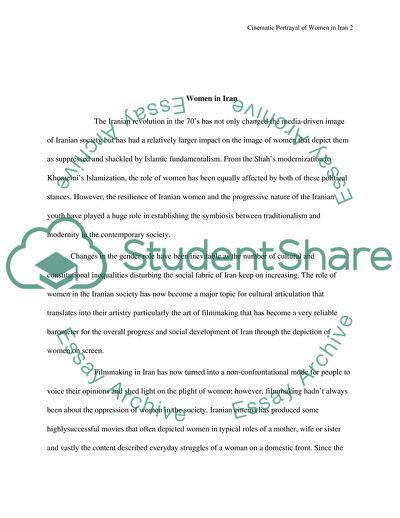Cite this document
(Cinematic Portrayal of Women in Iran Essay Example | Topics and Well Written Essays - 1500 words, n.d.)
Cinematic Portrayal of Women in Iran Essay Example | Topics and Well Written Essays - 1500 words. https://studentshare.org/visual-arts-film-studies/1759982-women-in-iranian-cinema-movie-ten
Cinematic Portrayal of Women in Iran Essay Example | Topics and Well Written Essays - 1500 words. https://studentshare.org/visual-arts-film-studies/1759982-women-in-iranian-cinema-movie-ten
(Cinematic Portrayal of Women in Iran Essay Example | Topics and Well Written Essays - 1500 Words)
Cinematic Portrayal of Women in Iran Essay Example | Topics and Well Written Essays - 1500 Words. https://studentshare.org/visual-arts-film-studies/1759982-women-in-iranian-cinema-movie-ten.
Cinematic Portrayal of Women in Iran Essay Example | Topics and Well Written Essays - 1500 Words. https://studentshare.org/visual-arts-film-studies/1759982-women-in-iranian-cinema-movie-ten.
“Cinematic Portrayal of Women in Iran Essay Example | Topics and Well Written Essays - 1500 Words”. https://studentshare.org/visual-arts-film-studies/1759982-women-in-iranian-cinema-movie-ten.


